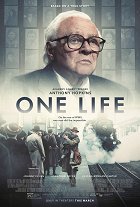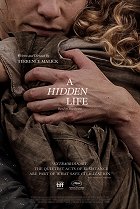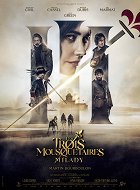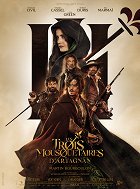Historical - Genres
Hottest on VOD Today
Characteristic features of historical films
The term "historical" is used to refer to films whose plot relates to past periods of human history. It is not a film genre in the true sense of the word and there are no specific rules for it, rather, it is a framework that serves to group films matching a given criterion, according to which they can fill all sorts of other genres, the most common being historical dramas, historical war films or historical adventure films. Films set in relatively recent history, e.g. in the twentieth century, are often referred to as historical films, too; however, for the sake of simplicity and to set a clear boundary, this article will deal only with films that portray events that predate the invention of cinema, i.e. the end of the nineteenth century.
Although many historical films are based on real events and their protagonists are real people we know from history books, the basis of a historical film can be a fictional narrative that may differ from reality in many ways. In addition, many historical films draw on myths and legends or historical novels, whose protagonists can also be mythical or fictional characters. Historical films include, for example, biblical films inspired by Christian stories, costume dramas characterized by an emphasis on flamboyant dress, and historical epics, which are characterized in particular by costly productions based on lavish sets and emphasizing the overall monumentality from epic film music, majestic sets and hundreds of extras. Some historical films contain several of these aspects at once – narrative and formal epicness, striking costumes and religious themes. The connecting element of historical films in general is the work with period stylization and the attempt to authentically portray certain events together with the atmosphere and context of the era.
The most important historical films chronologically
The history of historical cinema dates back to the silent era, with Italian films such as Quo Vadis? (1912) and Cabiria (1914), the story of a young slave girl during the Punic Wars that was a great success in the USA and inspired the American director D.W. Griffith to make Judith of Bethulia (1914) and Orphans of the Storm (1921), as well as his two most famous works: the controversial The Birth of a Nation (1915), set during the American Civil War, and the megalomaniacal Intolerance (1916), about intolerance between people in four different time periods. Other historical films of the silent era that stand out include the French co-production Napoleon (1927) and American The Ten Commandments by Cecil B. DeMille (1923), which started a wave of biblical films that was continued by, for instance The King of Kings (1927), which depicted the dramatic story of Jesus Christ, and Ben-Hur (1925), which, apart from the fate of Christ, dealt primarily with the adventures of a condemned Jewish prince. Cecil B. DeMille continued to work with historical themes even after the advent of sound with, for example, The Sign of the Cross (1932), Cleopatra (1934), and The Crusades (1935), as well as in the later Samson and Delilah (1949).
In the 1930s, costume dramas came to the fore with adaptations of famous novels, such as Becky Sharp (1935) and Anna Karenina (1935). This trend culminated in Victor Fleming's Gone with the Wind (1939), an eight-Oscar-winning historical romance set during the American Civil War and the reconstruction of a defeated South that eclipsed William Wyler's similar and two-Oscar-winning Jezebel (1938), which replaced war with terminal illness. Sergei Eisenstein's Soviet film Alexander Nevsky (1938) used the story of a hero who defended Russia from invaders to give courage in the face of an impending Nazi invasion, and he later portrayed another phase of Russian history in the two-part Ivan the Terrible (1945). A number of period dramas were produced in the UK in the 1940s, the most famous of which were Shakespearean adaptations directed by Laurence Olivier such as Henry V (1944) and Hamlet (1948). American films such as Quo Vadis (1951), Julius Caesar (1953) and the biblical The Robe (1953) revived the interest in narrative historical stories, which led to films such as Land of the Pharaohs (1955), War and Peace (1956) and a new The Ten Commandments (1956), directed by Cecil B. DeMille as a remake of his own earlier film.
Ben-Hur (1959) also received a new version directed by William Wyler and would go on to win a record eleven Oscars, becoming a precursor to the golden age of classic Hollywood historical epics in the 1960s. It was followed by Stanley Kubrick's Spartacus (1960), with four Oscars to its credit, which told the story of a slave revolt in ancient Rome, and Anthony Mann's Cid (1961), which was also up for four statuettes. More modern versions of well-known stories were offered by the remake of King of Kings (1961) and the monumental Cleopatra by Joseph L. Mankiewicz (1963). Also notable at the same time were the British films Tom Jones (1963), Becket (1964), Zulu (1964), A Man for All Seasons (1966) and The Lion in Winter (1968); the French adventure series that begun with Angelique (1964) and the Italian-French film The Leopard (1963). In Italy, historical sword-and-sandal films enjoyed considerable popularity from the late 1950s to the mid-1960s with, for example, The Last Days of Pompeii (1959) and The Trojan War and The Colossus of Rhodes (1961). In the following two decades, historical films would become sporadic, made by directors such as Richard Lester (The Three Musketeers, 1973), Stanley Kubrick (the four Oscar-winning Barry Lyndon, 1975), Tinto Brass (Caligula, 1979), Peter Greenaway (The Draughtsman's Contract, 1982), Miloš Forman (the eight-Oscar-winning Amadeus, 1984), Akira Kurosawa (Ran, 1985), Roland Joffé (The Mission, 1986), Stephen Frears (the three-Oscar-winning Dangerous Liaisons, 1988) and Martin Scorsese (The Last Temptation of Christ, 1988).
In the early 1990s, several major period dramas were produced in France, notably Cyrano de Bergerac (1990), Queen Margot (1994) and The Horseman on the Roof (1995). In America, interest in historical themes was reignited by Kevin Costner's award-winning Dances with Wolves (seven Oscars, 1990), Kevin Reynolds's Robin Hood: Prince of Thieves (1991), Michael Mann's The Last of the Mohicans (1992) and Mel Gibson's Braveheart (five Oscars, 1995). In the UK, Les Misérables (1998), Elizabeth (1998) and Shakespeare in Love (1998) drew attention, and several adaptations of Jane Austen's novels were also produced, namely Persuasion (1995), Sense and Sensibility (1995), Emma (1996), Mansfield Park (1999) and Pride & Prejudice (2005). At the beginning of the new millennium, the most notable historical films were, among others, Ridley Scott's Gladiator (five Oscars, 2000) and Kingdom of Heaven (2005), Ang Lee's Crouching Tiger, Hidden Dragon (four Oscars, 2000), Martin Scorsese’s Gangs of New York (2002), Edward Zwick’s The Last Samurai (2003), Oliver Stone’s Alexander (2004), Wolfgang Petersen’s Troy (2004), Mel Gibson’s The Passion of the Christ (2004), and Terrence Malick’s The New World (2005). The vogue for grand historical films has since passed, although there have been exceptions in the form of 300 (2006), Agora (2009), Robin Hood (2010), Les Misérables (2012), A Royal Affair (2012), 12 Years a Slave (2013), Exodus: Gods and Kings (2014), The Favourite (2018), The King (2019), and Emma (2020).
Abel Gance's Napoleon (1927)
Photo © Metro-Goldwyn-Mayer (MGM)

Films about prehistory and the stone age
There are not many films set in the Mesozoic period and they are often animated with dinosaurs as main characters, e.g. The Land Before Time (1988), Dinosaur (2000), and Walking with Dinosaurs 3D (2013). The Good Dinosaur (2015) is about the friendship between a small Apatosaurus and a prehistoric human child in a world where dinosaurs are not extinct. The non-animated works that can be mentioned include, for example, the Czechoslovakian Journey to the Beginning of Time by Karel Zeman (1955), in which four boys set off back in time on a long journey through the Ice Age, the Tertiary, the Mesozoic and the Primordial Ages to the beginnings of life on Earth. The American film One Million B.C. (1940) and the British One Million Years B.C. (1966) and When Dinosaurs Ruled the Earth (1970) also had plots combining human characters with dinosaurs.
The society of prehistoric tribes was depicted in films such as Quest for Fire (1981), The Clan of the Cave Bear (1986) and 10,000 BC (2008), in which a group of hunters is captured by members of a more advanced civilization. The German co-production Iceman (2017) told a fictional story inspired by the actual discovery of the remains of a prehistoric mountain man, while Alpha (2018) focused on a young hunter's quest to tame a lone wolf. The life of people in prehistoric times was also depicted in comedies such as Caveman (1981), RRRrrrr!!! and Year One (2009), and in animated films, such as Ice Age (2002), The Croods (2013) and Early Man (2018), which takes place at the turn of the Stone and the Bronze Ages.
One Million B.C. (1940)
Photo © United Artists
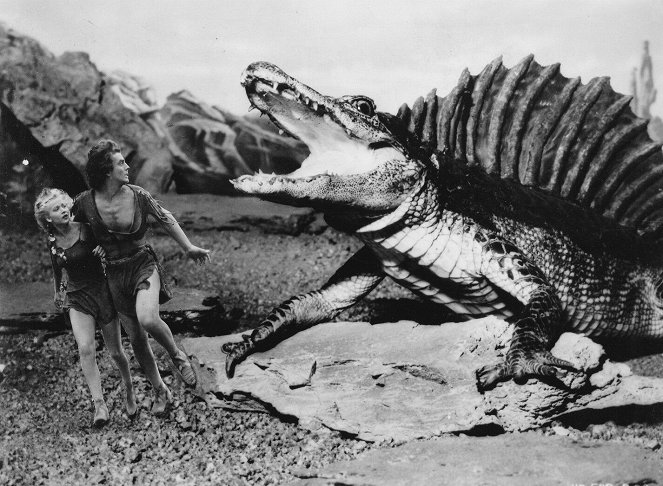
Films from Ancient Egypt, Greece and Rome
The theme of the ancient Egyptian civilisation was tackled by German director Ernst Lubitsch in his silent film The Loves of Pharaoh (1922), characterised by lavish sets and expensive crowd scenes. Egyptian mythology was also explored in The Egyptian (1954), Land of the Pharaohs (1955) and Solomon and Sheba (1959), which depicted the fate of an Israeli king in love with the royal ally of an Egyptian pharaoh. Later, the animated The Prince of Egypt (1998) and the fantasy films The Scorpion King (2002) and Gods of Egypt (2016) also approached ancient Egypt and its myths. Also notable is the Spanish historical drama Agora (2009) by Alejandro Amenábar, which revolves around the fate of a pioneering scientist against the backdrop of the growing influence of Christianity and the decline of the Roman Empire. The ruler of Egypt, Cleopatra, has been the focus of several films, the most famous being Cecil B. DeMille’s Cleopatra (1934) and the three Oscar-winning epic Cleopatra by Joseph L. Mankiewicz (1963), which was the most expensive feature film of all time, taking three years to complete and nearly bankrupting 20th Century Fox. Cleopatra also appeared in the historical films Caesar and Cleopatra (1945), Antony and Cleopatra (1972) and the animated Asterix and Cleopatra (1968).
Other famous personalities have also routinely become subjects for a number of filmmakers. The Roman emperor Julius Caesar mentioned in connection with Cleopatra has been the protagonist of three films bearing his name in 1950, 1953 and 1970, all based on the play of the same name by William Shakespeare. The story of the King of Macedonia and his campaign in Persia was the subject of the 1956 film Alexander the Great and the 2004 film Alexander. As far as ancient Greece is concerned, most films dealt with the course or consequences of the Trojan War. Already during the silent era of cinema, the Italian film The Fall of Troy (1911) and the German two-part feature Helen of Troy (1924) dealt with this theme, and in later decades they were followed by films such as Helen of Troy (1956), The Trojan War (1961), The Trojan Women (1971) and the blockbuster Troy (2004). The Greek films Electra (1962) and Iphigenia (1977), both based on famous ancient tragedies, also partly worked with this theme. The films Giant of Marathon (1959), The 300 Spartans (1962) and the later comic-book adaptation 300 (2006) dealt with the Greco-Persian Wars. Ancient mythology and legends were the inspiration for Ulysses (1954), Jason and the Argonauts (1963), Clash of the Titans (1981), Hercules (1997) and Immortals (2011).
The Roman Empire was the subject of many Italian films, especially during the 1950s and 60s, with examples such as Spartaco (1953), Sheba and the Gladiator (1959), the catastrophic Pompeii: The Last Day (1959) and Constantine the Great (1962), but there are also older works such Scipio Africanus: The Defeat of Hannibal (1937). The films Cabiria (1914), Hannibal (1959) and Siege of Syracuse (1960) charted the history of the Punic Wars, Cecil B. DeMille's The Sign of the Cross (1932) told the story of the Roman emperor Nero, and Tinto Brass's controversial Caligula (1979) dealt with the namesake emperor and his fondness for orgies. Quo Vadis (1951) and Stanley Kubrick's Spartacus (1960) were important, but it is also worth mentioning the American film The Fall of the Roman Empire (1964) and the German-Italian-Romanian two-part co-production The Fight for Rome (1968-1969), set at the end of the collapsing Roman Empire. More recent films include Ridley Scott's Gladiator (2000), which tells the story of a Roman general seeking revenge for the massacre of his family, as well as Quo Vadis (2001) from Poland, Centurion (2010), The Eagle (2011), and the catastrophic Pompeii (2014).
Cleopatra (1934)
Photo © Paramount Pictures

Biblical films
Films inspired by stories and characters from the Bible have often dealt with the fate of Jesus Christ and his disciples, ancient kings and prophets, and events that took place not long after the creation of the world, and they are usually set in Palestine, also known as the Land of Israel. The book of Genesis inspired, for example, the animated film The Creation of the World (1957), which ends with the birth of Adam and Eve, the French co-production The Last Days of Sodom and Gomorrah (1962), about God's punishment for the sins of the inhabitants of those two cities, and The Bible (1966), which dealt with several stories from the Old Testament, including the Great Flood, which was also the subject of Noah's Ark (1928) and Noah (2014). Moses was the protagonist of the silent film The Ten Commandments (1923) and its 1956 remake, and his story was also told in the previously mentioned animated film The Prince of Egypt (1998) and the live-action Exodus: Gods and Kings (2014). Other biblical stories that have been adapted into film include Samson and Delilah (1949), Salome: The Dance of the Seven Veils (1953), The Story of Ruth (1960), Barabbas (1961), King David (1985), One Night with the King (2006), and The Book of Daniel (2013), as well as a large number of TV films.
The life and crucifixion of Jesus Christ was portrayed in Cecil B. DeMille’s The King of Kings (1927) and its 1961 remake directed by Nicholas Ray, a French film by Julien Duvivier called Behold the Man (1935), The Greatest Story Ever Told by George Stevens (1965), which was nominated for five Academy Awards, Jesus by John Krish and Peter Sykes (1979), The Last Temptation of Christ by Martin Scorsese (1988), The Gospel of John by Philip Saville (2003), the controversial The Passion of the Christ by Mel Gibson (2004), and Son of God by Christopher Spencer (2014). Kevin Reynolds's Risen (2016) told the story of Jesus from the perspective of an unbelieving Roman soldier, while Garth Davis's Mary Magdalene (2018) took the point of view of that famous follower of Jesus. In the history of cinema, the story of Christ has also been adapted as a musical (Jesus Christ Superstar, 1973) and as a comedic religious parody (Life of Brian, 1979). The fate of Jesus was also a major sub-plot in Ben-Hur: A Tale of the Christ (1925) and its two remakes in 1959 and 2016, and it was also partially present in the two Oscar-winning The Robe (1953) and its sequel Demetrius and the Gladiators (1954).
The Ten Commandments (1923)
Photo © Paramount Pictures

Films from Ancient China and Feudal Japan
The Chinese film The Emperor's Shadow (1996), the Chinese co-production drama The First Emperor (1998), the Chinese-Hong Kong film Hero (2002), the films Battle of the Warriors (2006), Sacrifice (2010), and the comedy Little Big Soldier (2010) are all set several centuries before the Christ. The period of clashes between Chinese warriors and hostile nomadic tribes inspired the ballad of the warrior Mulan, which was first adapted into the Hong Kong film Lady General Hua Mu-Lan (1964), followed by the American animated film Mulan (1998) and its live-action remake (2020), as well as Chinese films Mulan: Legendary Warrior (2009) and Unparalleled Mulan (2020). The war of the three empires after the collapse of China in the 3rd century AD was the subject of the Hong Kong film Diau Charn (1958) and later also in the more recent Chinese films The Battle of Red Cliff (2009), The Lost Bladesman (2011) and The Assassins (2012).
The history of China in later eras was portrayed, for example, in the Japanese film Princess Yang Kwei-Fei (1955), the Hong Kong films The Twelve Gold Medallions (1970) and All Men Are Brothers (1975), and then in The Warrior (2001), Warriors of Heaven and Earth (2003), House of Flying Daggers (2004), Curse of the Golden Flower (2006), Saving General Yang (2013) and The Assassin (2015). The South Korean films Arrow: The Ultimate Weapon (2011) and The Fortress (2017) dealt with the Chinese invasion of Korea in the 17th century, while the 18th and 19th centuries were covered by films such as The Opium War (1997) and The Warlords (2007), as well as fight films such as Shaolin Temple (1976), The 36th Chamber of Shaolin (1978) and Shaolin Abbot (1979). They were later joined by Hark Tsui's Once Upon a Time in China (1991) and Ang Lee's widely acclaimed Crouching Tiger, Hidden Dragon (2000), which became an international sensation, garnering four out of ten Oscar nominations and helping to popularize the wuxia genre worldwide.
In Japan, the best-known director of historical films is Akira Kurosawa, who became particularly famous for his samurai films Seven Samurai (1954), Yojimbo (1961) and Sanjuro (1962), but he also made films about different eras of old Japan (from the Middle Ages to the end of the 19th century), for example, Rashomon (1950), Throne of Blood (1957), The Hidden Fortress (1958), Red Beard (1965), Kagemusha (1980) and Ran (1985). Other films set in feudal Japan include The Tale of Genji (1951), Harakiri (1962), Samurai Spy (1965), Samurai Rebellion (1967), Silence (1971), Shogun Assassin (1980), Heaven and Earth (1990), Journey of Honor (1991), Owl’s Castle (1999), and Hara-Kiri: Death of a Samurai (2011), as well as the fantasy anime films Ninja Scroll (1993), Princess Mononoke (1997) and The Tale of the Princess Kaguya (2013). American works dealing with feudal Japan include the action fantasy 47 Ronin (2013), Martin Scorsese’s drama Silence (2016), the animated fantasy Kubo and the Two Strings (2016), and Edward Zwick's The Last Samurai (2003), set after the end of the feudal period and in the early days of modern Japan.
Seven Samurai (1954)
Photo © Toho Company Ltd.
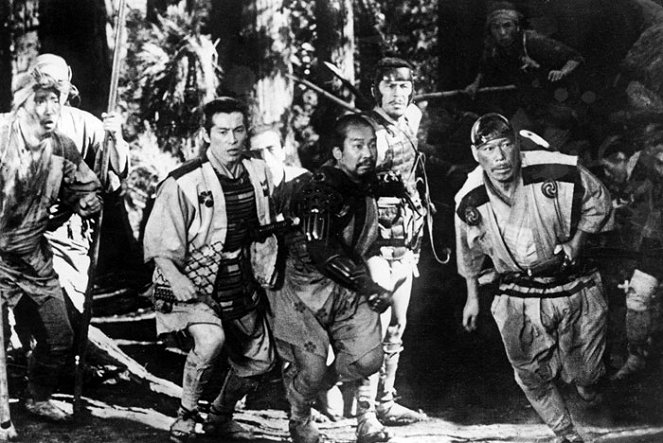
The Middle Ages in Film I – The Early Period and the Crusades
The term "Middle Ages" refers to the period between the end of antiquity and the beginning of modern times, thus covering a relatively extensive span from roughly the middle of the 5th century to the turn of the 15th and 16th centuries, and it has been one of the most inspiring subjects for filmmakers, who have portrayed it in many different ways. For example, films inspired by Arthurian legends, such as Prince Valiant (1954), the three Oscar-winning musical Camelot (1967), the French Lancelot of the Lake (1974), the comedy Monty Python and the Holy Grail (1975), the dramas Excalibur (1981), First Knight (1995), King Arthur (2004) or King Arthur: Legend of the Sword (2017), are all set in the late 5th and early 6th centuries. The 5th century was also the setting for Fritz Lang's German historical fantasy film Die Nibelungen (1924), while Celtic or Anglo-Saxon legends set in the 6th century were the basis for films such as Lovespell (1979), Tristan + Isolde (2006), Beowulf and Grendel (2005) and the animated Beowulf (2007). The Viking period has been the subject of films such as The Viking (1928), The Vikings (1958), The Long Ships (1964), Alfred the Great (1969), Revenge of the Barbarians (1984), The 13th Warrior (1999), Pathfinder (2007), as well as the Polish Army of Valhalla (2003), the Danish Valhalla Rising (2009) and the Russian Viking (2016).
The films Pope Joan (1972 and 2009) dealt with the story of a woman who disguised herself as a man to study theology in the 9th century and went on to become Pope. The Norwegian Pathfinder (1987) was based on a Sami legend about a young man forced to become a tracker in the service of enemy raiders. Nominated for four Oscars, Anthony Mann's Cid (1961), was an Italian-American co-production named after the knight and Spanish national hero who united Spain against the Arabs in the second half of the 11th century. Also set in the same century are the American The War Lord (1965), set in Normandy, France, and the German The Physician (2013), which describes the fate of a young medical apprentice in Persia.
The period of the Crusades was portrayed in, for example, Cecil B. DeMille’s The Crusades (1935), Richard Thorpe's Ivanhoe (1952), David Butler's King Richard and the Crusaders (1954), Ingmar Bergman's The Seventh Seal (1957), and later in Ridley Scott's Kingdom of Heaven (2005), and the Swedish Arn: The Knight Templar (2007), by Peter Flinth. The history and reverberations of the Crusades were been peripherally reflected in some of the films about the adventures of Robin Hood, set during the reign of Richard the Lionheart (notably 1991's Robin Hood: Prince of Thieves and 2010's Robin Hood).
Excalibur (1981)
Photo © Orion Pictures Corporation
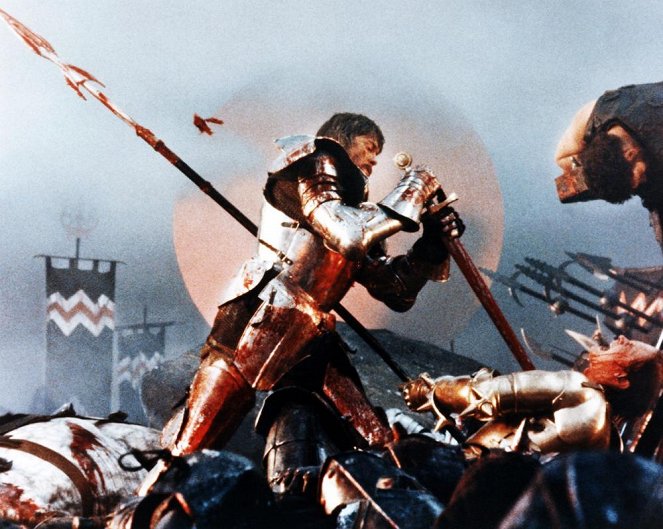
The Middle Ages in Film II – The Late Period and the Hundred Years' War
The film British Becket (1964) received twelve Oscar nominations with its story about the dispute between King Henry II of England and the Catholic Church, while the three Oscar-winning The Lion in Winter (1968) also revolved around Henry II. The life of Saint Francis of Assisi was depicted in the Italian films Brother Sun, Sister Moon (1972) and Francesco (1989), while Genghis Khan (1965) and Mongol: The Rise of Genghis Khan (2007) focused on the famous Mongolian warlord. The stories of the famous traveller Marco Polo were depicted, for example, in the films The Adventures of Marco Polo from 1938 and Marco Polo from 1961. Five Oscars, including Best Picture, went to Mel Gibson's Braveheart (1995), which was inspired by the leader of a Scottish rebellion in the War of Independence at the turn of the 13th and 14th centuries and was later followed in time and place by Outlaw King (2018). Other films set in the Middle Ages include The Decameron (1971), The Canterbury Tales (1972), The Name of the Rose (1986), The Hour of the Pig (1993), A Knight's Tale (2001), Black Death (2010), and Ironclad (2011), as well as the Soviet Alexander Nevsky (1938) and Andrei Rublev (1966), the Swedish The Virgin Spring (1960), the Czechoslovak The Valley of the Bees (1967) and the Polish Knights of the Teutonic Order (1960) and Casimir the Great (1975).
The theme of the Hundred Years' War was explored in films about the famous English king Henry V directed Laurence Olivier in 1944 and Kenneth Branagh in 1989, both of which were based on the historical play by William Shakespeare. Shakespeare's historical plays were also the inspiration of Orson Welles's Chimes at Midnight (1965) and David Michôd's The King (2019), which also revolved around the character of King Henry V and his faithful page. The story of Joan of Arc, also linked to the Hundred Years' War, and was treated, for example, in Victor Fleming's Joan of Arc (1948), which took in two of its seven Oscar nominations. One of the earliest portrayals of the fate of Joan of Arc, however, was the short film Joan of Arc (1900), directed by French filmmaker and special-effect pioneer George Méliès. France, in fact, has returned to its national heroine most often, with the films The Passion of Joan of Arc (1928), The Trial of Joan of Arc (1962), The Messenger: The Story of Joan of Arc (1999), The Silence of Joan (2011) and a pair of films by Bruno Dumont, Jeannette: The Childhood of Joan of Arc (2017) and Joan of Arc (2019). The Hussite Wars, on the other hand, were described in the Czechoslovak historical films Jan Hus (1954), Jan Zizka (1955) and Against All (1956) by Otakar Vávra. And Laurence Olivier's Richard III (1956) and the Tower of London films from 1939 and 1962 covered the Wars of the Roses in the second half of the 15th century.
Braveheart (1995)
Photo © 20th Century Fox
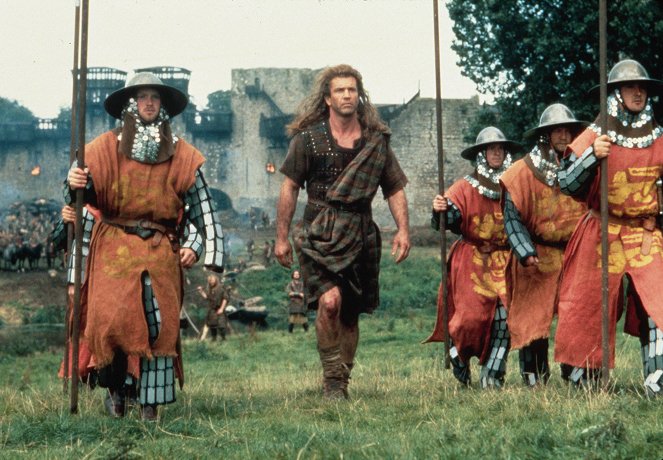
Shakespeare film adaptations
Several films have already been mentioned that drew on the works of the famous playwright William Shakespeare, particularly his historical plays and tragedies dealing with Richard III, Henry V, Julius Caesar, and Antony and Cleopatra, to name a few. Other adaptations of his plays (whether tragedies or comedies) are also historical in their essence, since their models were created as early as the turn of the 16th and 17th centuries. Shakespeare's tragedies have given rise to several versions of Hamlet, the most famous of which were made by directors Laurence Olivier (four Oscar awards, 1948) and Franco Zeffirelli (1990), who preserved the realities of medieval Denmark, and by Kenneth Branagh (1996), who moved the plot to the 19th century. Romeo and Juliet, the lovers from Renaissance Verona, have been the subject of several adaptations in film by George Cukor (1936), Renato Castellani (1954), and Franco Zeffirelli (two Oscar awards, 1968), while Macbeth, a play inspired by a real Scottish monarch living in the 11th century, was the protagonist of adaptations by Orson Welles (1948), Roman Polanski (1971), and Justin Kurzel (2015). Similarly, Othello had adaptations set in the 15th or 16th century from the USA (1952 and 1995), Great Britain (1965), Italy (1986) and the Soviet Union (1955).
Other notable historical adaptations of Shakespeare's tragedies include the Soviet film King Lear (1970), based on the legend of a Celtic king from the 8th century BC, and Titus (1999) and Coriolanus (2011), both set in ancient Rome. Historical stylization was also essential for several comedies such as The Merchant of Venice (2004) is set in the 16th century, and this period is also a feature of The Taming of the Shrew (1929) and the more recent Zeffirelli's version of the same play from 1967. A Midsummer Night's Dream (1935) was set in and around ancient Athens, while a more recent version from 1999 was set in 19th century Tuscany. Other adaptations of Shakespeare comedies include Much Ado About Nothing (1993), directed by Kenneth Branagh and set in 16th century Sicily, and Twelfth Night: Or What You Will (1996), set in Victorian England. Of the historical films solely inspired by Shakespeare's plays, apart from the aforementioned Chimes at Midnight (1965), The King (2019) and Akira Kurosawa's Throne of Blood (1957) and Ran (1985), the British film Rosencrantz & Guildenstern Are Dead (1990) by Tom Stoppard is worthy of note, as it approached the story of Hamlet from the perspective of two minor characters.
Macbeth (1971)
Photo © Columbia Pictures
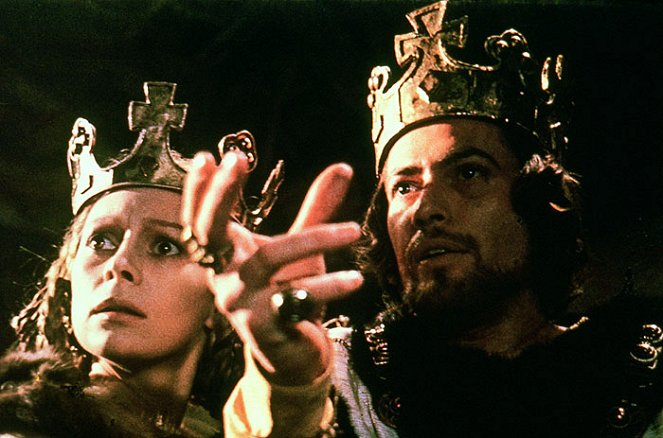
Films about the Renaissance
The Renaissance refers to a historical period from approximately the 14th to the 16th century that served as a source of subjects for filmmakers, likewise with the Baroque (roughly the 17th and 18th centuries) and other periods and artistic movements. For example, the Spanish film The Borgia (2006) is about the family life and tenure of the controversial Pope Alexander VI; The Agony and the Ecstasy (1965), which depicts the controversy over the painting of the Sistine Chapel, was nominated for five Oscars; and A Man for All Seasons (1966), a drama about the life of politician Thomas More and his quarrel with Henry VIII over the establishment of the Church of England, won six golden statuettes. The story of King Henry VIII and his many wives was the subject of the British film The Private Life of Henry VIII (1933), as well as the ten Oscar-nominated costume drama Anne of the Thousand Days (1969), and The Other Boleyn Girl (2008). John Madden's Shakespeare in Love (1998) took in seven of its thirteen Oscar nominations with a story that combined a historical theme playing with unknown facts surrounding Shakespeare's life with a romantic comedy, and Roland Emmerich's Anonymous (2011) followed with a similar theme. The Headsman (2005), on the other hand, focused on the practices of the Spanish Inquisition.
The brief period of the reign of Queen Jane Grey was covered in Lady Jane (1986), while the subsequent reign of Queen Elizabeth I was depicted, in addition to the silent French film Queen Elisabeth (1912) and the adventure feature Fire Over England (1937), in the British film Elizabeth (1998), nominated for seven Academy Awards, and its sequel Elizabeth: The Golden Age (2007). Other films about monarchs of the same era mainly focus on the situation in Scotland (1936's Mary of Scotland, 1971's five-Oscar-nominated Mary, Queen of Scots and its 2018 version), France (Queen Margot with versions from 1954 and 1994) and Russia (the Soviet two-part Ivan the Terrible from 1945).
Elizabeth: The Virgin Queen (1998)
Photo © Working Title Films
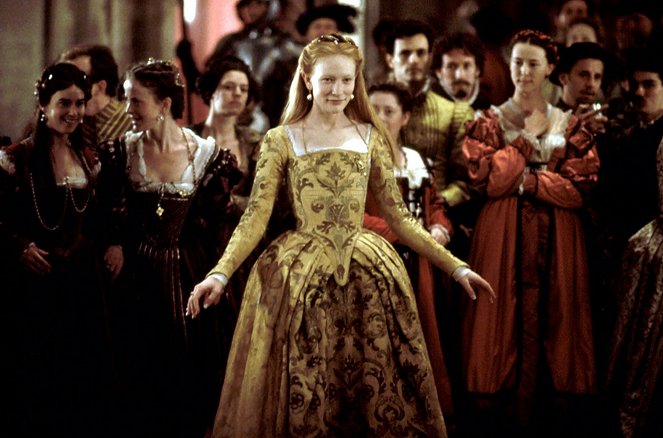
Films about the Baroque, Rococo and Classical periods
Seventeenth-century France has been the setting for various adaptations of Alexandre Dumas's adventure novels, most notably The Three Musketeers (1921, 1953, 1973, 1993 and 2011), The Iron Mask (1962) and The Man in the Iron Mask (1998). The same applies to the five Oscar-nominated Cyrano de Bergerac (1990) and to the French co-produced adventure-historical film series consisting of Angelique (1964), Angelique: The Road to Versailles (1965), Angelique and the King (1966), Indomitable Angelique (1967) and Angelique and the Sultan (1968), which depicted the fate of a noblewoman married to a wealthy count. The life of a famous Swedish ruler was the subject of the American drama Queen Christina from 1933 and the Finnish co-production The Girl King from 2015, while the reign of Louis XIV was depicted in The King Is Dancing (2000), Vatel (2000), A Little Chaos (2014) and The Death of Louis XIV (2016), among others. Other films have drawn on the lives of various poets, composers and other creative figures, such as The Draughtsman's Contract (1982), the Oscar-winning Amadeus (1984), All the Mornings of the World (1991), The Libertine (2004), and Moliere (2007).
The Last Valley (1971) was set against the backdrop of the Thirty Years' War, Cromwell (1970) dealt with the English Civil War, and the Polish film With Fire and Sword (1999) described the story of a heroic knight and his beloved during the conflict between Ukrainians and Tatars. The Dutch film Admiral (2015) told the story of a famous Dutch naval commander, while Rob Roy (1995) was named after a Scottish folk hero and outlaw who earned the reputation of Scotland's Robin Hood. Witch trials have been the subject of the Danish Day of Wrath (1943), the French The Crucible (1957), the British Witchfinder General (1968) and The Devils (1971), the Czechoslovak Witchhammer (1969), and the American The Crucible (1996). Nominated for ten Oscars, The Favourite (2018) is set in an early 18th century English court dominated by ambition, duplicity and a hateful struggle for the Queen's favour. 18th century Venice became the setting for the story of the legendary seducer in Casanova (2005). The American film The Scarlet Empress (1934) and the British The Rise of Catherine the Great (1934) dealt with the fate of the famous Russian monarch, while events involving the royal court and aristocracy in other countries have been the subject of the the British films The Madness of King George (1994), The Duchess (2008) and the Danish A Royal Affair (2012), among others.
Four Oscars were awarded to Stanley Kubrick's satirical film Barry Lyndon (1975), which depicted the fate of a young Irishman seeking social recognition in various eras of the second half of the 18th century, including the Seven Years' War, which is the setting of the French film Fan-Fan the Tulip (1952). The story of a mutiny on a British Navy ship against a sadistic captain was first treated in Frank Lloyd's historical adventure film Mutiny on the Bounty (1935), nominated for eight Oscars, and then in Mutiny on the Bounty (1962) and Roger Donaldson's The Bounty (1984), nominated for seven statuettes. The British drama Belle (2013) told the story of the daughter of a noble British sea captain and a black slave. The second half of the 18th century was also the setting for various adaptations of the novel “Wuthering Heights”, which were made in 1939, 1970, 1992 and 2011, while a novel about the seductive affairs of an ageing viscount was the subject of Stephen Frears's Dangerous Liaisons (1988) and Miloš Forman's Valmont (1989). The character of another irredeemable seducer of the same era was also the subject of the British film Tom Jones (1963), which took in four out of ten Oscar nominations.
Amadeus (1984)
Photo © 2002 Warner Bros.
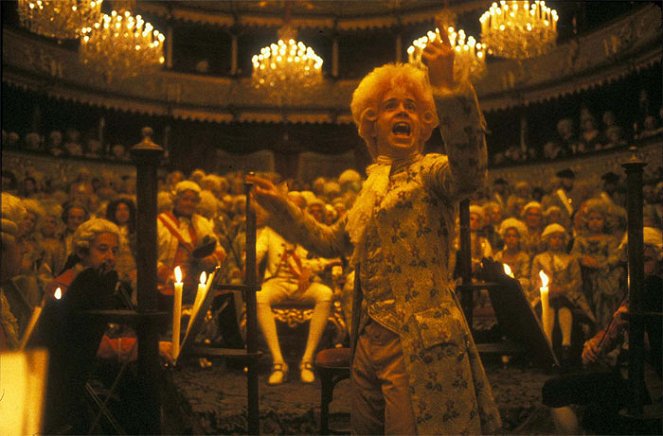
The French Revolution and the Napoleonic Wars on film
D.W. Griffith’s Orphans of the Storm (1921), from the silent era, deals with the revolutionary events of the late 18th century, the pompous French nobility and the angry poor. Scenes from the French Revolution are also abundantly present in the adventure films The Scarlet Pimpernel (1934) and Chouans! (1988), in the American swashbuckling film Scaramouche (1952), and in the Spanish co-production The Adventures of Scaramouche (1963). The French Revolution was also the subject of Anthony Mann's costume drama Reign of Terror (1949), the madcap comedy Start the Revolution Without Me (1970) and the French-Polish co-production Danton (1982). The French film Ridicule (1996) and the American The Affair of the Necklace (2001) are both set at the birth of the revolution, the four-Oscar-nominated costume extravaganza Marie Antoinette (1938) ends with it, as did the namesake film from 2006, as well as the plots of the American film A Tale of Two Cities (1935) and its 1958 British version, both based on the Charles Dickens novel of the same name.
The period of Napoleonic France and its wars are dealt with in, among others, King Vidor's 1956 American version of War and Peace and Sergei Bondarchuk's 1966 Soviet version of the same novel, as well as in That Hamilton Woman (1941), The Pride and the Passion (1957), Waterloo (1970) and The Duellists (1977), and in many biographical dramas about Napoleon: the four-hour silent film Napoleon from 1927, Napoleon from 1955 and Monsieur N. from 2003. The films Conquest (1937) and Desirée (1954), on the other hand, dealt with the romantic escapades of Napoleon and various women. The more recent adventure film Master and Commander: The Far Side of the World (2003) focused on naval battles. There have also been comedies about Napoleon, such as The Emperor's New Clothes (2001) and N.: Napoleon & Me (2006). The four Oscar-nominated Les Misérables (1935), based on Victor Hugo’s novel, is set during the Paris uprising of 1832, many years after the Revolution and the Napoleonic Wars. That novel has been the basis of numerous more recent adaptations, such as the French Les Misérables (1958 and 1982), a British co-production from 1998, and the 2012 musical that won three Oscars out of eight nominations.
Waterloo (1970)
Photo © Mosfilm
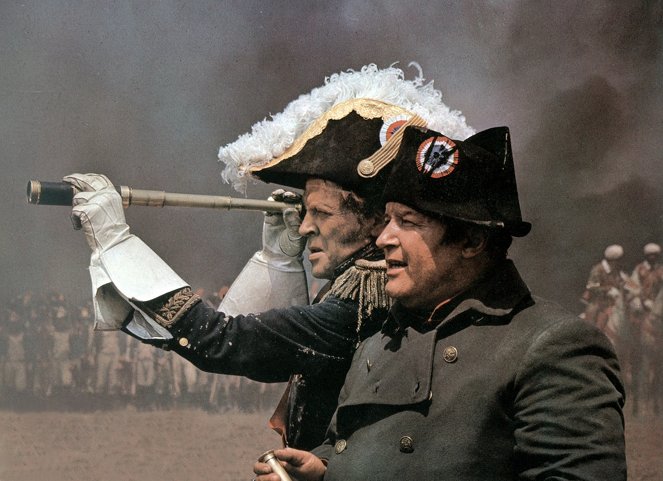
The history of the Americas in film
The discovery of America was depicted in two films released in 1992: Ridley Scott's 1492: Conquest of Paradise and John Glen's Christopher Columbus: The Discovery. Set at the turn of the 15th and 16th centuries, Mel Gibson's Apocalypto (2006) describes the practices of a fading ancient Mayan nation in Central America, while Werner Herzog's German film Aguirre, the Wrath of God (1972) is about an expedition in the South American jungle led by a conquistador obsessed with finding the mythical golden city of El Dorado. Terrence Malick's The New World (2005) deals with an English captain's romance with an Indian woman, which was also the subject of the animated film Pocahontas (1995). The Mission (1986), a film about a Jesuit missionary in the Spanish and Portuguese colonies of South America, earned seven Oscar nominations. The conquest and colonisation of the American continent, as well as the struggles and disputes between the colonists and the Indian tribes have been the subject of several westerns, such as Drums Along the Mohawk (1939), Northwest Passage (1940), and Broken Arrow (1950), as well as several adventure dramas, including Unconquered (1947) and Black Robe (1991).
The later era of revisionist westerns also produced films about white men's friendships with Indians, most notably Kevin Costner's Dances with Wolves (1990), a seven-Oscar-winning story of an American soldier who manages to win the trust of an Indian tribe. The adaptations of James Fenimore Cooper’s novel “The Last of the Mohicans” (1920, 1936, 1965, 1992) tell the story of a white hunter and his Indian friends during the conflict between France and England for the new American territories. The drafting of the Declaration of Independence became the subject of the historical musical 1776 (1972), while the American War of Independence was also the subject of the films America (1924), The Devil's Disciple (1959), Revolution (1985), and The Patriot (2000).
Revolution (1985)
Photo © Warner Bros. Pictures
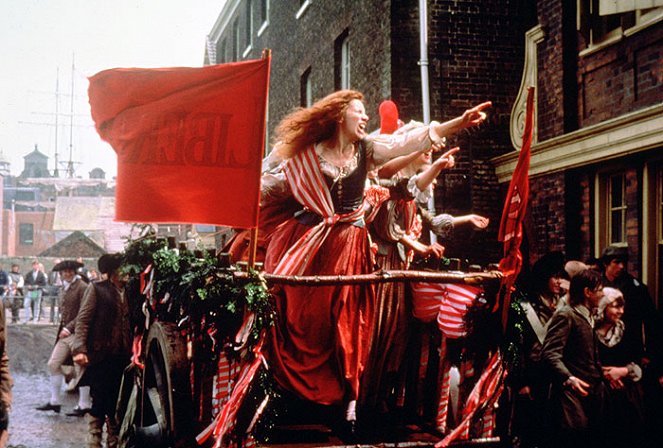
The American Civil War in film
During the silent era, D.W. Griffith's controversial The Birth of a Nation (1915) was the strongest film based on the American Civil War, though the subject also permeated the grotesque The General (1926). Later, Victor Fleming's Gone with the Wind (1939) was a colossal success with eight Academy Awards, interweaving the war and the reconstruction of the defeated South with the epic and fateful romance of a stubborn plantation owner's daughter with an arrogant army captain. The conclusion of the Civil War was also the subject of the western Virginia City (1940), and in the 1950s and 60s several westerns also dealt with themes of the war between the North and the South, for example, The Horse Soldiers (John Ford, 1959), Major Dundee (Sam Peckinpah, 1965), Shenandoah (Andrew V. McLaglen, 1965), Alvarez Kelly (Edward Dmytryk, 1966), The Good, the Bad and the Ugly (Sergio Leone, 1966) and Rio Lobo (Howard Hawks, 1970).
William Wyler's six-Oscar-nominated drama Friendly Persuasion (1956) was set just before the outbreak of the war that disrupted the rural tranquillity of a farming family, while Raoul Walsh's romantic drama Band of Angels (1957) followed the exploits of a plantation heiress who falls into the hands of slave traders. Three of the eight Oscar nominations went to the western How the West Was Won (1962), which depicted, among other things, the conquest of the Wild West and the Gold Rush, as well as the War Between the North and the South, in a canvass of four stories from American history. The war was also reflected in Don Siegel's drama The Beguiled (1971), in which students from a Southern girls' boarding school take in a wounded Union soldier. Three Oscars were won by Edward Zwick's Glory (1989), starring a black combat unit commander, while Ang Lee's Ride with the Devil (1999), dealt with the fate of several soldiers.
Director Ronald F. Maxwell achieved critical success with his sprawling fresco Gettysburg (1993), while his follow-up opus Gods and Generals (2003) achieved the opposite. Martin Scorsese's Gangs of New York (2002), a probe into the American underworld, was nominated for ten Oscars, and Anthony Minghella's Cold Mountain (2003) took in one of its seven nominations with a story about a wounded soldier returning to his beloved's farm through the devastation left by the war. Two Oscars out of twelve nominations went to Steven Spielberg's Lincoln (2012), a drama about the war and the abolition of slavery from the perspective of the political elite; The Conspirator (2010) dealt with the judicial unravelling of the conspiracy surrounding the assassination of Abraham Lincoln, and Free State of Jones by Gary Ross (2016) told the story of rebellious farmers who sought to establish their own state. Set in wartime but without any battles, Greta Gerwig's six-Oscar-nominated romantic drama Little Women (2019) told its story from the perspective of four teenage sisters and was the fourth adaptation of the famous novel, which was also made into films in 1933, 1949 and 1994.
Gettysburg (1993)
Photo © New Line Cinema
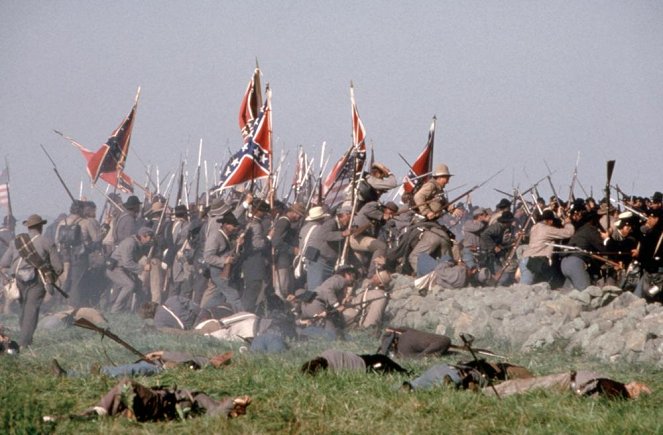
Other historical films set in the 19th century
Becky Sharp (1935) and Vanity Fair (2004) are set in the UK in the early 1900s, as were several adaptations of Jane Austen's novels, including 1940's Pride and Prejudice and 2005's four Oscar-nominated Pride & Prejudice, 1995's Sense and Sensibility, which turned in one of its seven Oscar nominations, as well as Persuasion (1995), Mansfield Park (1999), and Emma (1996 and 2020). There have also been many film adaptations of "Jane Eyre", the most famous of which were made in 1943, 1996 and 2011. In addition to the aforementioned Les Misérables, there have been various adaptations of “The Count of Monte Cristo” set in France in the period after the Napoleonic Wars, for example in 1934, 1954 and 2002. The French film The Horseman on the Roof dealt with a cholera epidemic in southern France in the 1830s, the Italian drama The Wanton Countess (1954) was set in Italy occupied by the Austrian army in the 1860s, and the Italian film The Leopard (1963), set in the same period, told the story of a popular uprising in Sicily. The historical theme of the defence of the Sudanese capital against Islamic invaders was the subject of the British film Khartoum (1966), while the British-Zulu war in South Africa was depicted in Zulu (1964) and Zulu Dawn (1979).
Period films such as Great Expectations (1946 and 2012), David Lean's Oliver Twist (1948), Carol Reed's six-Oscar-winning musical Oliver! and Roman Polanski's Oliver Twist all drew on the Victorian work of Charles Dickens. Queen Victoria herself was the subject of Mrs. Brown (1997) and The Young Victoria (2009), while the Austro-Hungarian Empress Elisabeth of Austria was present in the Austrian trilogy Sissi (1955), Sissi: The Young Empress (1956) and Sissi: The Fateful Years of an Empress (1957), as well as in Ludwig: The Mad King of Bavaria (1973). The film adaptations of Tolstoy's "Anna Karenina" (1935, 1967 and 2012) were all set in Tsarist Russia. The life of Ludwig van Beethoven was the subject of Immortal Beloved (1994) and Copying Beethoven (2006). Steven Spielberg's four Oscar-nominated drama Amistad (1997) reconstructed a ship mutiny of black slaves and their subsequent trial, and the lives of slaves was also the subject of 12 Years a Slave (2013), which turned in three of the nine Oscar nominations, The Birth of a Nation (2016) and Harriet (2019). John Wayne's The Alamo (1960), a war film set during the Texas War of Independence, was nominated for seven Oscars, while the westerns The Undefeated (1969) and Two Mules for Sister Sara (1970) were set against the backdrop of the French intervention in Mexico.
Amistad (1997)
Photo © 1997 Dreamworks Pictures
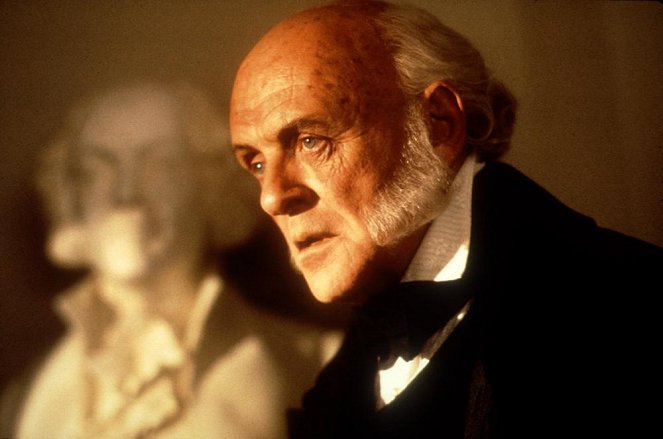
Historical TV series
Since the early days of television, historical themes have struggled with the demands of period setting and the considerable costs involved, which has meant that historical series have been relatively few in number and have rarely been able to compete with the film industry due to their cheaper appearance. Early TV productions include the British series Ivanhoe (1958), The Caesars (1968) and The First Churchills (1969), as well as several adaptations of the novel "Pride and Prejudice" (1952, 1958 and 1967). Jane Austen's work was also the basis for the series Persuasion (1971), Emma (1972) and Mansfield Park (1983), while the Spanish-Italian The Life of Leonardo Da Vinci (1971), the British I, Claudius (1976) and The Borgias (1981), the French The Count of Monte Cristo (1979), the American-Japanese Shogun (1980), the Italian Marco Polo (1982) and Quo Vadis (1985), the American Peter the Great (1986) and the miniseries Christopher Columbus (1985) were also significant.
Although a larger number of historical series were made in the 1990s, the turning point came in the new millennium with the phenomenon called Rome (2005-2007), which was very expensive, but achieved considerable popularity and foreshadowed the direction of television production in the following years. The Tudors (2007-2010), which chronicled the life and exploits of England's King Henry VIII and the intrigues of his court, caused a similar stir, and in later years the exceptional and long-running historical series Spartacus (2010-2013), The Borgias (2011-2013), Vikings (2013-2020), The Last Kingdom (2015-2020), Medici (2016-2019), and Victoria (2016-2019) also achieved similar fame.
The series The Blue and the Gray (1982), North and South (1985-1994), and Scarlett (1994) dealt with the American Civil War, while George Washington (1984), John Adams (2008), TURN: Washington's Spies (2014-2017), and the miniseries Sons of Liberty (2015) dealt with the American War of Independence. The 1989 four-part series The French Revolution, the British comedy Let Them Eat Cake (1999) and the 2020 series La Révolution told the story of the French Revolution, while Sharpe (1993-2006) and Hornblower (1998-2003), the 2002 French miniseries Napoleon and the 2012 10-part Napoleon dealt with the subsequent Napoleonic Wars. Several series have revolved around the Russian Tsarina Catherine the Great, such as the Russian Ekaterina (2014-2019) and Catherine the Great (2015) or the British miniseries Catherine the Great (2019) and the comedy series The Great (2020). The series of TV films The Hollow Crown (2012-2016) adapted various historical plays by William Shakespeare. The Bible (2013) and A.D. The Bible Continues (2015) depicted various biblical stories, and the 2007 and 2016 series War and Peace were adaptations of Tolstoy's classic novel. The pen of Alexandre Dumas gave us The Count of Monte Cristo (1998) and The Musketeers (2014-2016); Jane Austen's work was the basis for Pride and Prejudice (1995) and Emma (2009); Victor Hugo's novel "Les Misérables" had various adaptations (2000 and 2018-2019), and Bleak House (2005) was based on the work of Charles Dickens, as was the miniseries Great Expectations (2011).
The unprecedented growth of historical series after 2010 is illustrated by The Pillars of the Earth (2010-2011), set in 12th century England, Reign (2013-2017), set in 16th century Scotland, and Versailles (2015-2018), set in 17th century France. The series The White Queen (2013) and The White Princess (2017) described events in 15th century England from the perspective of women, and The Spanish Princess (2019-2020) revolved around Catherine of Aragon. Black Sails (2014-2017) told the story of the golden age of pirates in the first half of the 18th century, while Outlander (2014-2020), is set in the same era, but in Scotland. Other historical series worth mention are World Without End (2012), Da Vinci's Demons (2013-2015), Marco Polo (2014-2016), Wolf Hall (2015), Knightfall (2017-2019), Gunpowder (2017) and Barbarians (2020).
Filmmaniak
Best history films
Schindler's List (1993) |
Braveheart (1995) |
Black Hawk Down (2001) |
The Peasants (2023) |
The Great Escape (1963) |
Cinderella Man (2005) |
One Life (2023) |
Titanic (1997) |
JFK (1991) |
Ben-Hur (1959) |
| All the best history films |


